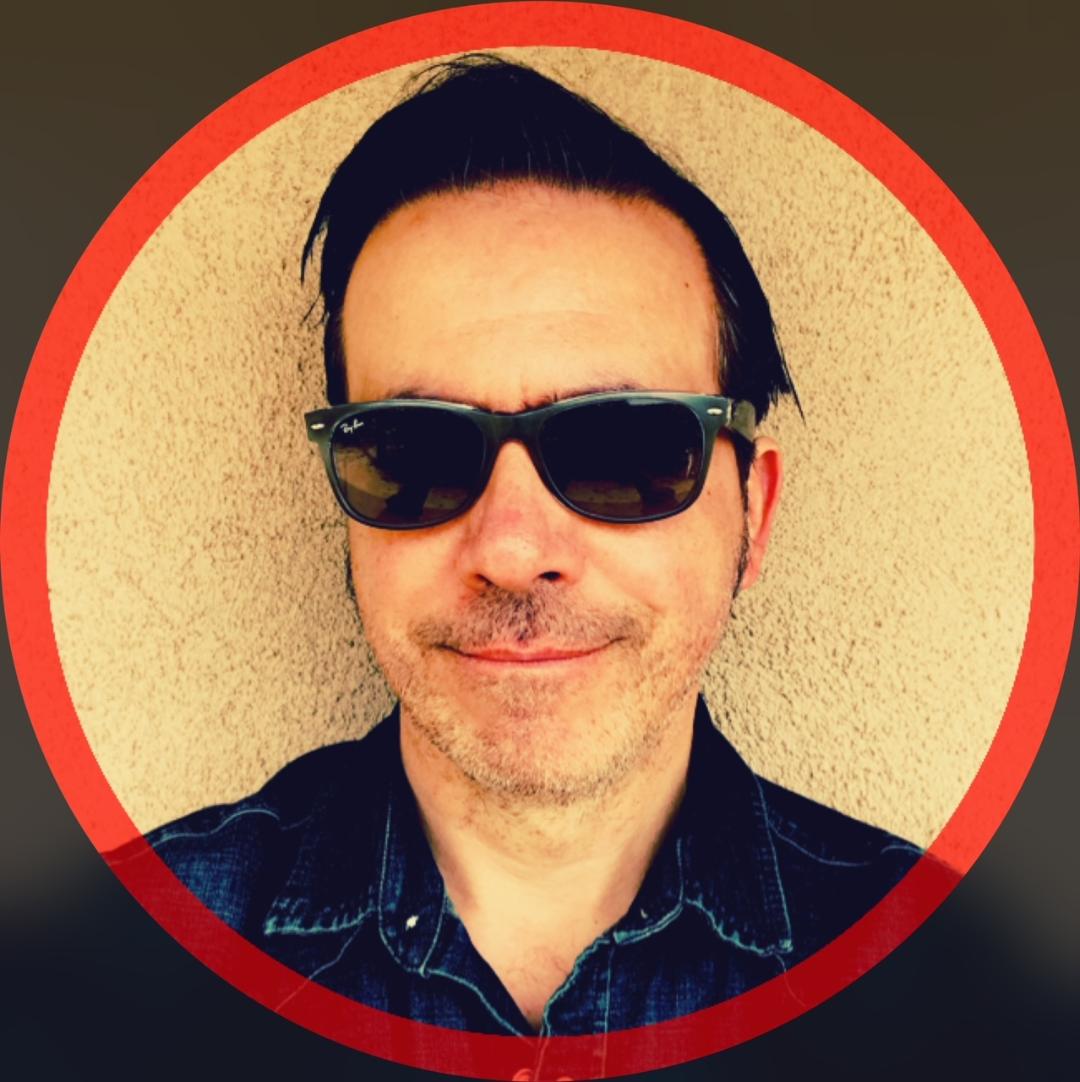Interview: Guitarist Paul Gilbert Discusses His New Online Rock Guitar School

On May 23, Paul Gilbert and ArtistWorks launched Rock Guitar School With Paul Gilbert, an online school that enables students of all ages and ability levels to learn directly from -- and interact with -- the Racer X and Mr. Big guitarist.
Students, who must subscribe to the service, can view Gilbert’s video lessons and submit their questions and performances directly to him for critiques and guidance. Gilbert will respond to each student with a personalized video.
Students can study at their own pace, which lets them drive the learning process according to their schedules, and they can access Gilbert's feedback at their own pace. Multiple camera angles show the lessons from various viewpoints, and students can slow down and loop lessons so they can focus on every tiny details.
"I’ve done lots of teaching in many different ways over the years, but I’m really glad ArtistWorks has built this platform," said Gilbert, who also hosts Paul Gilbert’s Great Guitar Escape, a five-day guitar workshop in upstate New York. "It will allow me to teach people easily anywhere in the world."
We recently spoke to Gilbert about his new online school, which you can check out here.
GUITAR WORLD: How many students do you plan on accepting at one time? Or what's the max, in terms of students, per session?
Get The Pick Newsletter
All the latest guitar news, interviews, lessons, reviews, deals and more, direct to your inbox!
Well, there are two main ways that I teach at my online school. The first is the rock guitar course that I have already put on video. There are over 100 new videos, and they’re not just random licks. It’s really a connected series of lessons that lead you from the most basic chords, step-by-step, all the way through the most advanced soloing techniques that I know. I did months of preparation and planning to make this course happen, and it’s much longer than you could fit on a DVD. But fortunately, it’s broken up into digestible lessons that average about six minutes each.
The second thing is that I can communicate one-on-one with all the students by using the Video Exchange feature of the site. The student just makes a video of what they are interested in working on and sends it in. I’ll watch it and reply with my own video in order to give the student specific advice, comments and new things to work on. The student’s video and my video response are posted on the site, so all the students can learn from it.
So the answer to “how many” is “one” and “all.”
Can anyone — even absolute beginners — enroll, or is there an audition process of some sort?
Everyone has to start somewhere! I certainly didn’t sound great when I first started playing, and I remember all my guitar teachers, both good and bad, and what it felt like to struggle with even the simplest of things. So I actually begin my course by playing the guitar left-handed. I’m right-handed, of course, so when I play left-handed, I’m immediately transported back to my first day as a guitarist.
I wanted to make sure to have that as a starting point. At the same time, because all the lessons are so connected to each other, I actually recommend that even the more advanced players start at the beginning. They may be surprised at what they learn, and if nothing else, they can enjoy watching me try to play left-handed!
[[ Paul Gilbert Presents Shred Alert is the only DVD to feature all the GW columns and video tutorials from Gilbert. Learn how to take your lead guitar playing to the next level with position shifting, alternate picking, 16th-note runs, muting techniques and much more! It's available now at the Guitar World Online Store. ]]
How would you describe your teaching method?
My teaching method is mostly inspired by teaching people one-on-one. I’ve certainly enjoyed doing clinic tours for larger audiences, but the most valuable teaching experience has been the hundreds of lessons that I’ve given where I can hear the students play. This gives me a very specific idea of what guitarists are interested in, and what techniques they need to focus on.
I gave over 100 lessons right before I filmed all the videos for this course, just so I could “take the temperature” of the guitarists out there. If there is a general method, it would just be focusing on smaller and smaller parts of a phrase or technique until it becomes easy to play. Then after the student practices it enough to make it indestructible, they’re ready to add something on. This way, the student always feels confident about whatever they’re playing. And confidence is where good sounds come from.
How did you choose the material?
It’s a combination of the things I see that my students are interested in, and the techniques I feel they need to make it happen … and the techniques and phrases I feel are important tools for any rock guitarist. Of course, I’ve built a reputation as a fast player, so I include that aspect of the instrument as well. There is a lot of material, so it wasn’t so much deciding what to include. I just included EVERYTHING, but the trick was to put it in a logical order so it makes sense to the student.
Is reading music involved at any point?
I introduce musical terminology throughout the course. There is a basic language of music that I think is important for communicating with other musicians -- just the kind of terminology that might make it easier to describe your ideas to the other guys in your band. And yes, in addition to the videos themselves, there is standard notation and tablature all there to be downloaded. But reading is not required. I’m not a reader myself, so I don’t expect anyone else to be.
Will the lessons dabble in a mix of genres you might not be normally associated with, or would you say this is probably best for a serious Paul Gilbert fan?
Most of the techniques are really globally useful, I think. You could use them in rock, metal, jazz, blues, fusion, country … just about anything. Note are notes and rhythms are rhythms. I do aim toward rock in that the techniques have the potential to be played hard and aggressively, and I definitely go into detail about how to control distortion and get nice uncluttered notes, even with a big, fire-breathing guitar sound. But the course is not based specifically on my songs. It’s more general techniques that will allow you to play any song.
Between this and the Great Guitar Escape, you really seem to be focusing on teaching and helping other players. What's your philosophy there? Why does it appeal to you so much?
Teaching is just something that has come naturally to me. I didn’t set out to be a teacher. I wanted to be a Beatle! But there were only four of them, so the job openings were really limited. Seriously, I just enjoy hanging out with musicians and getting into the details of music and guitar. I may be the teacher, but I certainly learn a lot from the process, and I think it improves the music that I make.
What else are you working on these days? Any new albums on the way?
I’m working on a new solo album right now. Actually, Thomas Lang is playing drums on it. He has a rock drumming course at ArtistWorks that’s been open for a while, so I’ve gotten some good advice from him about how to run it properly. And he is a ridiculously good drummer. He is making my album sound great!
How involved were you with the design of your Ibanez signature model guitar, the FRM100TR Fireman?
I was very involved. I designed the Fireman on my computer by taking a photo of an Ibanez Iceman and turning it upside-down in Adobe Photoshop. Then I just worked out the extra details like adding the lower cutaway, angling the pickups, designing the pickguard shape and asking for a big, beefy neck joint. Ibanez brought the idea to life in their custom shop, and I fell in love with the guitar. The production model is killer. I used a factory sample for the whole Mr. Big tour last year.
Here's a random one for you: Has anyone ever stolen a guitar from you? Did you get it back?
When I lived in Las Vegas, I was having a bunch of work done to my house and a really cool reissue of an Ibanez PF300 disappeared from my studio. I haven’t seen it since. But I found some of the original PF300s on eBay, so I’m good now.
Learn more about the Online Rock Guitar School with Paul Gilbert here, and follow Gilbert via his official website and Facebook page.
[[ Paul Gilbert Presents Shred Alert is the only DVD to feature all the GW columns and video tutorials from Gilbert. Learn how to take your lead guitar playing to the next level with position shifting, alternate picking, 16th-note runs, muting techniques and much more! It's available now at the Guitar World Online Store. ]]

Damian is Editor-in-Chief of Guitar World magazine. In past lives, he was GW’s managing editor and online managing editor. He's written liner notes for major-label releases, including Stevie Ray Vaughan's 'The Complete Epic Recordings Collection' (Sony Legacy) and has interviewed everyone from Yngwie Malmsteen to Kevin Bacon (with a few memorable Eric Clapton chats thrown into the mix). Damian, a former member of Brooklyn's The Gas House Gorillas, was the sole guitarist in Mister Neutron, a trio that toured the U.S. and released three albums. He now plays in two NYC-area bands.
“The rest of the world didn't know that the world's greatest guitarist was playing a weekend gig at this place in Chelmsford”: The Aristocrats' Bryan Beller recalls the moment he met Guthrie Govan and formed a new kind of supergroup
Carlos Santana hospitalized following pre-show medical emergency


![[from left] George Harrison with his Gretsch Country Gentleman, Norman Harris of Norman's Rare Guitars holds a gold-top Les Paul, John Fogerty with his legendary 1969 Rickenbacker](https://cdn.mos.cms.futurecdn.net/TuH3nuhn9etqjdn5sy4ntW.jpg)







